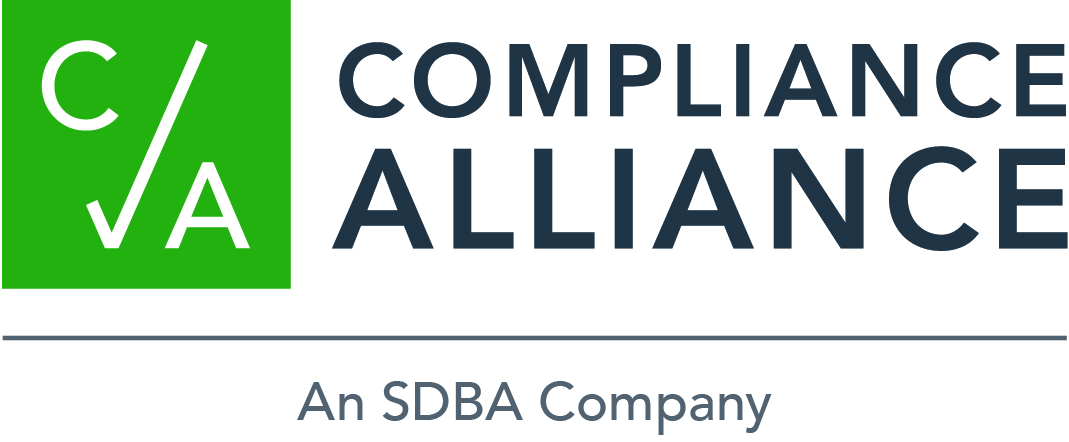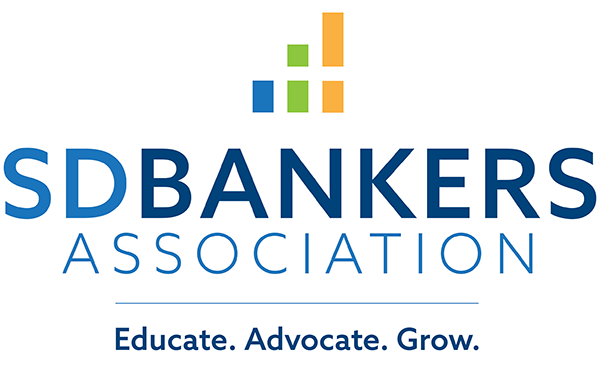ABA Extends 'America's Banks' Ads Outside Beltway
For the first time since its launch in 2016, ABA is expanding its “America's Banks” ad campaign beyond the Washington area. The campaign, which focuses on the important role banks play in their communities and the economy, will continue in Washington during the August congressional recess but also expand to select states across the country.
Digital ads touting banks’ role in creating jobs and growth and in protecting customers’ money will run in a variety of locations now through the end of the month. All ads point readers to aba.com/AmericasBanks, a special website that spotlights the many ways banks help people and places grow.
OCC Updates Comptroller's Licensing Manual
The OCC last week issued a revised version of the “Failure Acquisitions” booklet of its Comptroller’s Licensing Manual. The booklet provides an overview of policy considerations and evaluative factors that the OCC considers when evaluating a bank’s interest in acquiring a failing institution through the FDIC’s failure resolution process. View the booklet.

Question of the Week
For HMDA purposes, how do you report conditional approvals?
Answer: If the bank sent a notice of incompleteness under Reg. B, and the applicant did respond but did not meet the conditions for approval, you would use Code 3—Application denied.
If the bank sent a notice of incompleteness and the applicant just did not respond within the required time period, you would use Code 5—File closed for incompleteness.
If the bank did not send a notice of incompleteness and the applicant did not meet the underwriting conditions, you would use Code 3—Application denied.
Finally, if the applicant actually withdrew the application before a credit decision was made, then you would use Code 4—Application withdrawn.
Not a Compliance Alliance member? Learn more about membership with Compliance Alliance by attending one of our live demos:
Compliance rules and regulations change quickly. For timely compliance updates, subscribe to Compliance Alliance’s email newsletters.
Compliance Alliance offers a comprehensive suite of compliance management solutions. To learn how to put them to work for your bank, call 888.353.3933 or email.
Upcoming Events
- SDBA 2017 IRA School: Sept. 6-8, 2017, Sioux Falls
- SDBA 2017 Bank Technology Conference: Sept. 19-20, 2017, Sioux Falls
- SDBA 2017 Bank Security Management Training: Oct. 5, 2017, Sioux Falls
- SDBA IRA Fall Update: Oct. 12, 2017, Sioux Falls
- Onsite Certified Banking Security Manager: Oct. 18-19, 2017, Sioux Falls
- ABA 2017 National Agricultural Bankers Conference: Nov. 12-15, Milwaukee, Wis.
View all SDBA events
Advertising Opportunity
Learn more about sponsoring the SDBA eNews.
Questions/Comments
Contact Alisa DeMers, SDBA, at 800. 726.7322 or via email.
|
SD GOED Rolling Out 'Bulldoze, Build and Beautify' CDBG Program
The South Dakota Governor's Office of Economic Development (GOED) has set aside $1 million for a new Bulldoze, Build and Beautify (BBB) activity under the Community Development Block Grant (CDBG) program.
“We’re excited to launch this program after a lot of hard work and planning,” said Commissioner Scott Stern, GOED. “For communities to determine eligibility, and to address blighted properties in and understand the application process and timeline, we invite you to please review the eligibility requirements carefully. Interested applicants can also talk to regional planning districts for support and answer to questions as you prepare your materials.”
Interested cities or counties should submit an “Intent to Apply” package to GOED through their regional planning district, including the basic information described in the Intent to Apply Questionnaire and any supporting documentation by Friday, Aug. 18. Any applicants who miss that deadline may apply again beginning on Monday, Aug. 28. Learn more.
CFPB Proposes New Disclosure Form for Overdraft Fees
The Consumer Financial Protection Bureau last Friday released four new “prototype” overdraft disclosure forms as part of its “Know Before You Owe” campaign. The bureau plans further testing of the forms to determine whether they are more effective than the model opt-in form that banks currently use to explain the overdraft protection options available to consumers.
While the release of the forms was not accompanied by any regulatory amendments, CFPB Director Richard Cordray noted that the bureau is currently in the “pre-rule stage” of an overdraft rulemaking, “with no timing stated for when a rule might be proposed.” The bureau has been studying overdraft since February 2012.
Along with the model disclosure forms, the bureau also published a report on “frequent” overdraft users. The report noted that a low percentage (about 9 percent) of consumers are considered to be frequent overdrafters, incurring more than 10 overdraft or non-sufficient funds fees annually. Unsurprisingly, the study found that frequent overdrafters have lower credit scores, are more likely to be “credit constrained” than infrequent or non-overdrafters and are less likely to have a general purpose credit card. The study also found that 30.5 percent of frequent overdrafters are opted in to overdraft protection services, a rate 2.5 times higher than opt-in rates for other consumers.
ABA believes this opt-in rate demonstrates that frequent users understand and choose to use overdraft services to meet short-term credit needs. The report’s findings underscore the need for consumers to have access to a variety of small-dollar credit options--including overdraft--within the banking industry.
Fed Proposes Guidance Distinguishing Roles of Bank Boards, Management
The Federal Reserve last week issued a proposal to streamline its supervisory expectations for bank boards of directors. The proposal clarifies the distinction between the roles of bank boards and senior management teams.
For large banks with more than $50 billion in assets, the Fed proposed new criteria by which it will assess bank boards. These five “key attributes” include setting clear, consistent strategic direction and risk tolerance; actively managing information flow and board discussions; holding senior management accountable; supporting independent risk management and internal audit functions; and maintaining a capable board composition and governance structure.
The Fed proposed additional changes that would apply to banks of all sizes, including revising or rescinding supervisory expectations for boards that do not relate to their core responsibilities, starting with specific revisions to existing supervision and regulation letters, with revisions to board regulations and interagency guidance to follow. It also clarified that in most cases, matters requiring attention should be directed to the bank’s senior management team, not to the board.
ABA has long urged regulators to restore the balance between bank boards and senior management teams to allow directors to focus on their core responsibilities of determining the bank’s strategic direction and risk tolerance. The association will carefully review the proposal and provide feedback to the Fed. Comments on the proposal are due 60 days after the notice is published in the Federal Register. Read the proposal. For more information, contact ABA's Hu Benton.
Lawmakers Call for Harmonization of Cybersecurity Regulations
A bipartisan group of lawmakers last week called for greater coordination on cybersecurity regulations among federal financial services regulators. In light of recent large-scale cyberattacks this year, the groups voiced concern that an overly complex system of cybersecurity regulation has hindered banks’ ability to safeguard consumer data.
“A broad-based, collaborative effort--among your agencies and with the private sector--is needed to identify, defend against and counter these cyber threats,” the lawmakers said in a letter to the heads of five agencies. “These efforts should focus resources to keep the financial services sector resilient, safe and secure, reduce inefficiencies and improve outcomes. Coordination and harmonization amongst regulators are necessary to ensure that financial institutions can direct their human and financial cybersecurity resources to identify and prevent attacks.” Read the letter.
Registration Launches for Fall Financial Education
Registration is now open for two of the ABA Foundation’s national campaigns to help young Americans understand the future implications of their financial decisions and the importance of saving over spending. Bankers can learn more about Get Smart About Credit and Lights, Camera, Save! by joining two free webinars hosted by ABA this month. Past and current participating institutions will share best practices and strategies for running successful programs.
On Thursday, Aug. 10, at 1 p.m. CDT, ABA will host a webinar on Get Smart About Credit, a program that provides bankers an opportunity to visit classrooms and educate teens about the importance of using credit and how the financial decisions they make today will affect their future. Bankers that register for the program will receive access to resource materials including school and parent outreach letters, presentation lessons, student activities, communication tools and promotional materials, available this year in both English and Spanish.
ABA will host a second webinar on Thursday, Aug. 17, at 2 p.m. CDT, on its Lights, Camera, Save! program--an annual contest that encourages teens to use their videography skills to educate themselves and their peers about the value of saving and using money wisely. Videos are submitted through a participating local bank, which will select one winning video to submit for judging at the national level.
Learn to Lead Your Bank in the Ever-Changing World of Technology
Sessions, solutions, vendors, products, networking and more. To help you lead your bank in this ever-changing world of technology, the SDBA will offer the 2017 Bank Technology Conference on Sept. 19-20 at the Ramkota Hotel in Sioux Falls.
Leaders and innovators in the field will provide sessions on cybersecurity, vendor management, regulatory issues and director education. In addition to the impressive line-up of industry experts, this conference will provide an opportunity to network and share resources with others in your field and a chance to visit with exhibitors to see and experience the latest in products and services.
This conference is designed for the “technology team” in your bank. Technology managers, information security officers, IT committees, IT auditors, heads of operations, chief information officers and anyone with responsibilities or an interest in bank technology are encouraged to attend.
|
|


